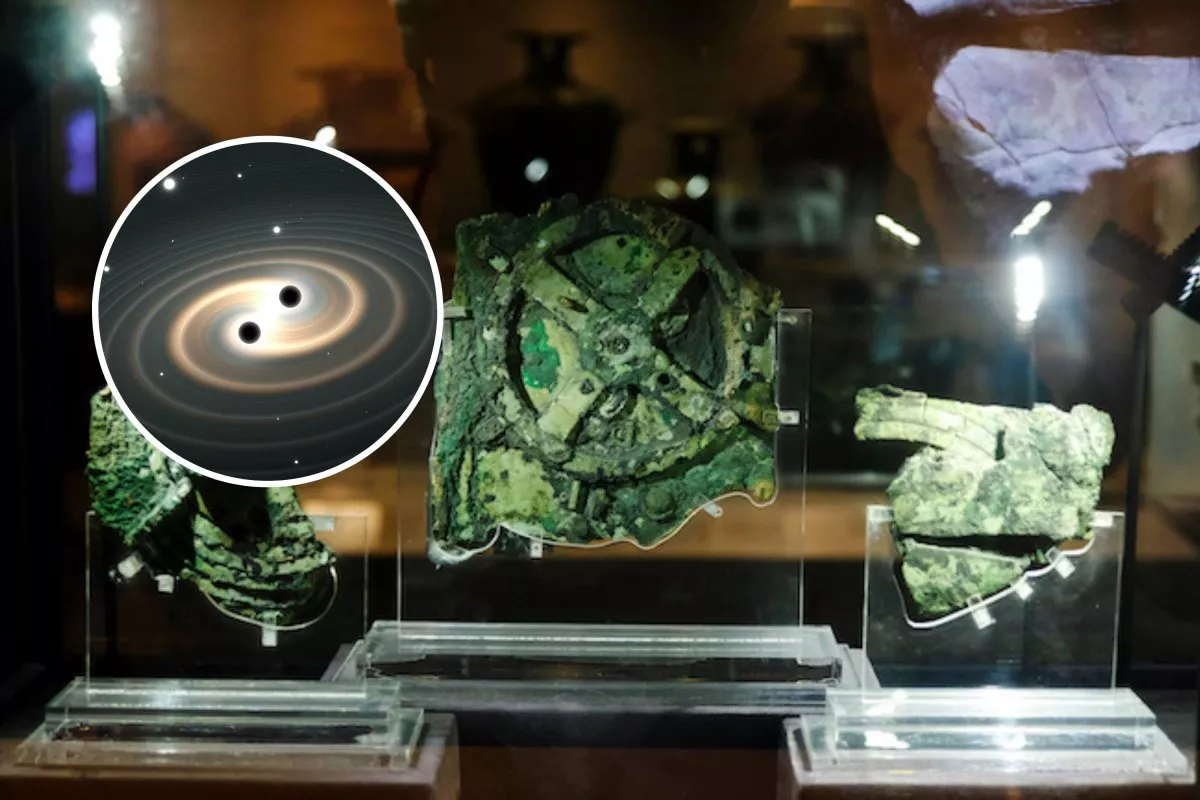Special techniques used to study ripples in the universe may have helped researchers solve an ancient mystery.
According to a new paper in Horological Magazine.
These techniques allowed the researchers to tell how many holes were in one of the broken rings of the Antikythera Mechanism, the ancient computer shown in Indiana Jones and the Dial of Destiny.
The Antikythera Mechanism is an ancient Greek analog device dating between 100 and 200 BC that is considered the world’s first known computer. Discovered in 1901 on a shipwreck off the Greek island of Antikythera, the device is thought to have been used to predict astronomical positions and eclipses for calendrical and astrological purposes.
The mechanism is composed of a complex system of brass gears and numbers housed in a wooden case. It has 30 gears, which is an incredibly sophisticated design for its time.
Its complexity suggests that the ancient Greeks had developed advanced knowledge of gear-based technology, far more advanced than previously thought for that era.
Modern imaging techniques, such as X-ray computed tomography, have been used to study the internal structure and functions of the mechanism. It slowly became clear that it was used to calculate the positions of the planets, predict eclipses, and track months and years.
Thanks to X-ray imaging in 2020, one of the device’s rings was found to have regularly spaced holes. Because the ring was broken, it was not clear how many rings there were originally, but researchers estimated between 347 and 367.

ISTOCK / GETTY IMAGES PLUS / University of Glasgow
According to the new paper, the ring likely had 354 holes, corresponding to the cycle of the moon. According to their calculations, the ring with 354 holes is hundreds of times more likely than having 360 holes.
“We present a new analysis of the positions of holes under the calendar ring of the Antikythera Mechanism,” the researchers write in the paper. “We significantly refine their estimate of the number of holes that were present in the full ring. Our 68 percent confident estimate of this number, taking all the data into account, is 355.24 [plus or minus about 1.4].
“If the holes adjacent to the fractures are removed from the analysis, our estimate becomes 354.08. A ring of 360 holes is highly disadvantaged, and one of 365 holes is implausible, given the assumptions of our model.”
This mystery was solved using similar statistical modeling techniques to those used to study gravitational waves, which are ripples in the fabric of spacetime created by the motion of massive objects traveling outward from the source.
“Late last year, a colleague showed me data obtained by YouTuber Chris Budiselic, who was looking to make a replica of the calendar ring and was investigating ways to determine how many holes it contained,” the paper’s co-author . Graham Woan, a professor in the School of Physics and Astronomy at the University of Glasgow, said in a statement.
“It struck me as an interesting problem and one that I thought I could solve in a different way over the Christmas holidays, so I decided to use some statistical techniques to answer the question.
After using this technique, scientists discovered that the number of holes was 354 or 355.
“Previous studies had suggested that the calendar ring was likely to have tracked the lunar calendar, but the dual techniques we applied to this piece of work greatly increase the likelihood that this was the case,” co-author Joseph Bayley, also a researcher at the University of Glasgow, said in the statement.
“It has given me a new appreciation for the Antikythera mechanism and the work and care that Greek craftsmen took to make it – the accuracy of the hole positioning would have required very precise measuring techniques and an incredibly steady hand to strike them .”
While we’ll never really know how many holes the rings actually had, the analysis provides pretty strong evidence that there were 354.
“It’s a neat symmetry that we’ve adapted the techniques we use to study the universe today to understand more about a mechanism that helped people keep track of the heavens nearly two millennia ago,” Woan said.
“We hope that our findings about the Antikythera Mechanism, although less supernaturally spectacular than those made by Indiana Jones, will help deepen our understanding of how this remarkable device was created and used by the Greeks.”
Do you have a tip for a science story that Newsweek should be covered? Have a question about statistics? Tell us via science@newsweek.com.
Unusual knowledge
Newsweek is dedicated to challenging conventional wisdom and finding connections in search of common ground.
Newsweek is dedicated to challenging conventional wisdom and finding connections in search of common ground.